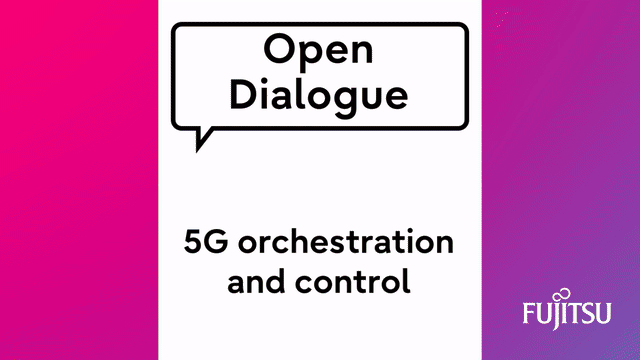Video Transcript:
Hi. I’m Dave Allabaugh. I’m a network transformation expert at Fujitsu. I’m here to start an open dialogue about 5G orchestration and control.
When traditional networking element management systems were developed, nobody outside of science fiction could imagine how complex networks would become. In the 5G world, networks connect more and more people, more and more organizations, and more and more things, transmitting more and more data under ever more demanding conditions. The 5G network essentially needs a Swiss Army knife of capabilities. Network slicing, for delivering services with different performance needs, automated upgrades and configuration to save time and reduce errors, self-diagnosing and healing to make the network highly resilient and reliable, not to mention sophisticated functions like security, path computation, load balancing and SLA management. And the network has to do all this with minimal human intervention while it’s actively processing traffic, no matter what volume of traffic, standards of performance, or complexity of service we demand from it. If all that sounds like a huge puzzle with a million moving parts, you’ve got the idea.
So, let’s take a quick look at how we make it happen. From the radio access network (RAN) to the edge, to the core, to the cloud, a whole new definition of lifecycle management is emerging. This new reality revolves around seamless, end-to-end service delivery across multiple network segments. Orchestration, service assurance, and automation together form the foundation of lifecycle management in the 5G world. These software-based functions use artificial intelligence (AI) and machine learning (ML) to observe how network traffic varies and respond when conditions change.
So when I say the 5G network is like a puzzle with a million moving parts, that’s the challenge. Everything has to work together and evolve continuously over time, which means several things. Open standards, open-source technology, open APIs – the 5G network can’t function without these. Open networking, by its very nature, depends on collaboration. Collaboration among network vendors, integrators, and service providers. 5G orchestration and control, as well as AI and ML, all demand the right mix of modular software components and platforms, as well as containerized modular applications. Systems and microapps have to be flexibly integrated for each individual network. Many operators will want to bring legacy equipment and software into their transforming network architectures. And most of all, expertise and depth of experience are vital in helping network operators bring all these pieces together.
At Fujitsu, we’ve spent decades working with multigenerational and multivendor networks. So please reach out to us and let’s continue the conversation about how to drive your 5G network forward.
